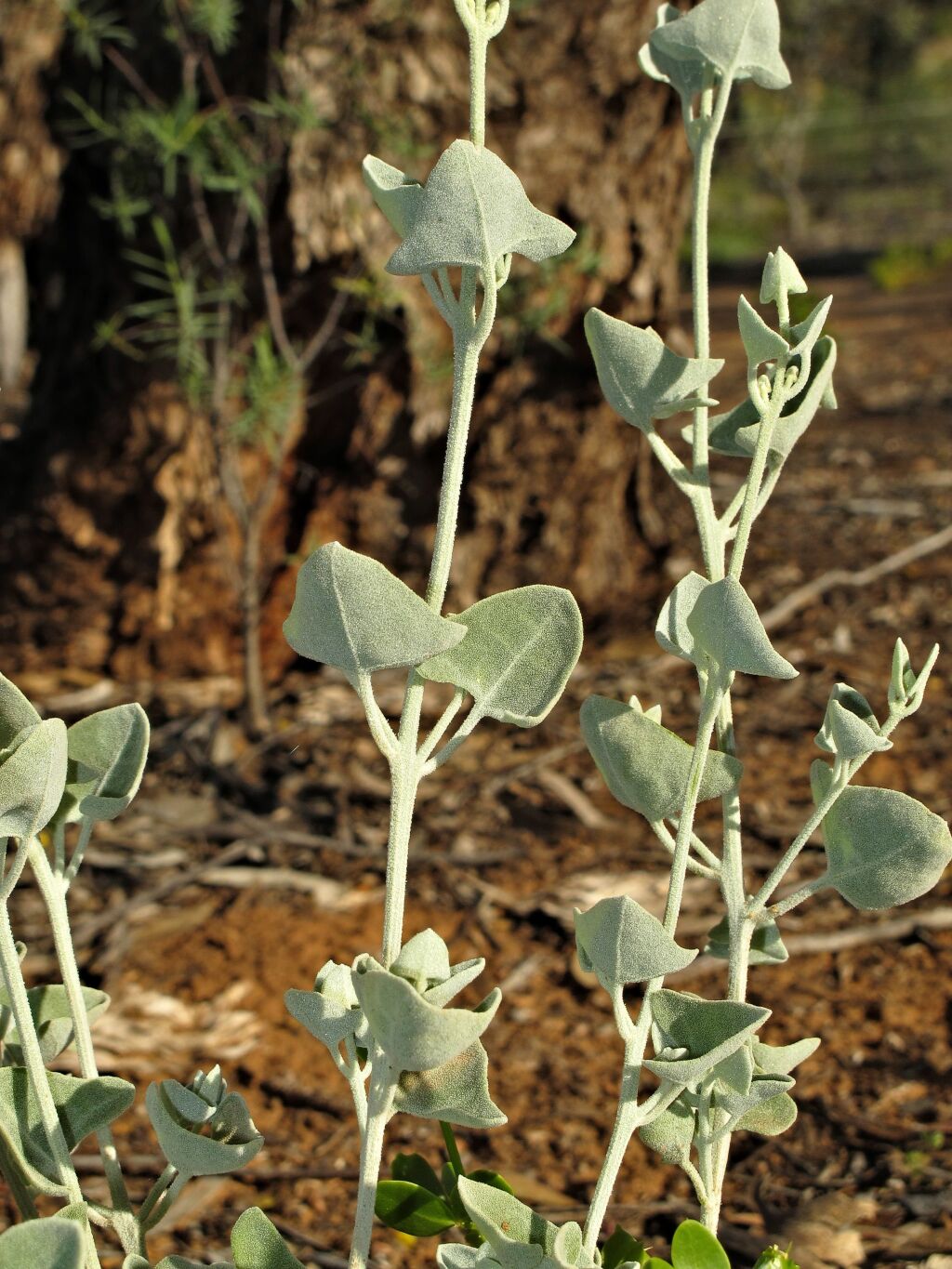Chenopodium curvispicatum
Paul G.Wilson Cottony SaltbushRather soft-stemmed shrub to c. 1 m high, usually with decurved branches. Leaves petiolate, mostly opposite, triangular, broadly hastate or semicircular, 1–1.5 cm long and wide, covered with depressed-globose vesicular hairs, usually less densely above. Inflorescence a narrow terminal panicle, usually decurved; flowers bisexual or female; tepals 5, united to about midway, densely covered on outer surface with shortly stalked, white, globose vesicular hairs, initially enclosing ovary but opening widely (to c. 6 mm diam.) with maturity to expose the yellow to deep reddish inner face; stamens 5, united into a ring at base; pericarp succulent at maturity, yellow to red. Seed horizontal, blackish, c. 1.5 mm diam., falling free from fruiting perianth Flowers mostly Mar.–Sep.
LoM, MuM, Wim, VRiv, MSB, RobP, MuF. Also WA, SA, NSW. Locally common on heavier, often limestone-rich and/or subsaline soils in the far northwest. .
Walsh, N.G. (1996). Chenopodiaceae. In: Walsh, N.G.; Entwisle, T.J., Flora of Victoria Vol. 3, Dicotyledons Winteraceae to Myrtaceae, pp. 129–199. Inkata Press, Melbourne.
 Spinning
Spinning



